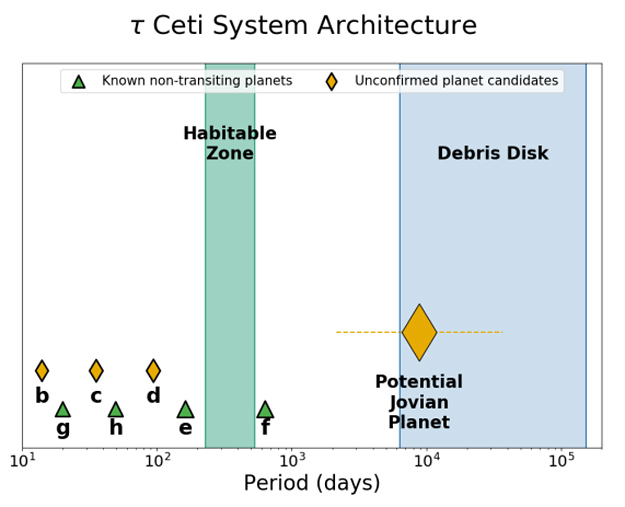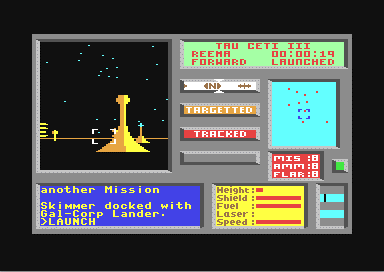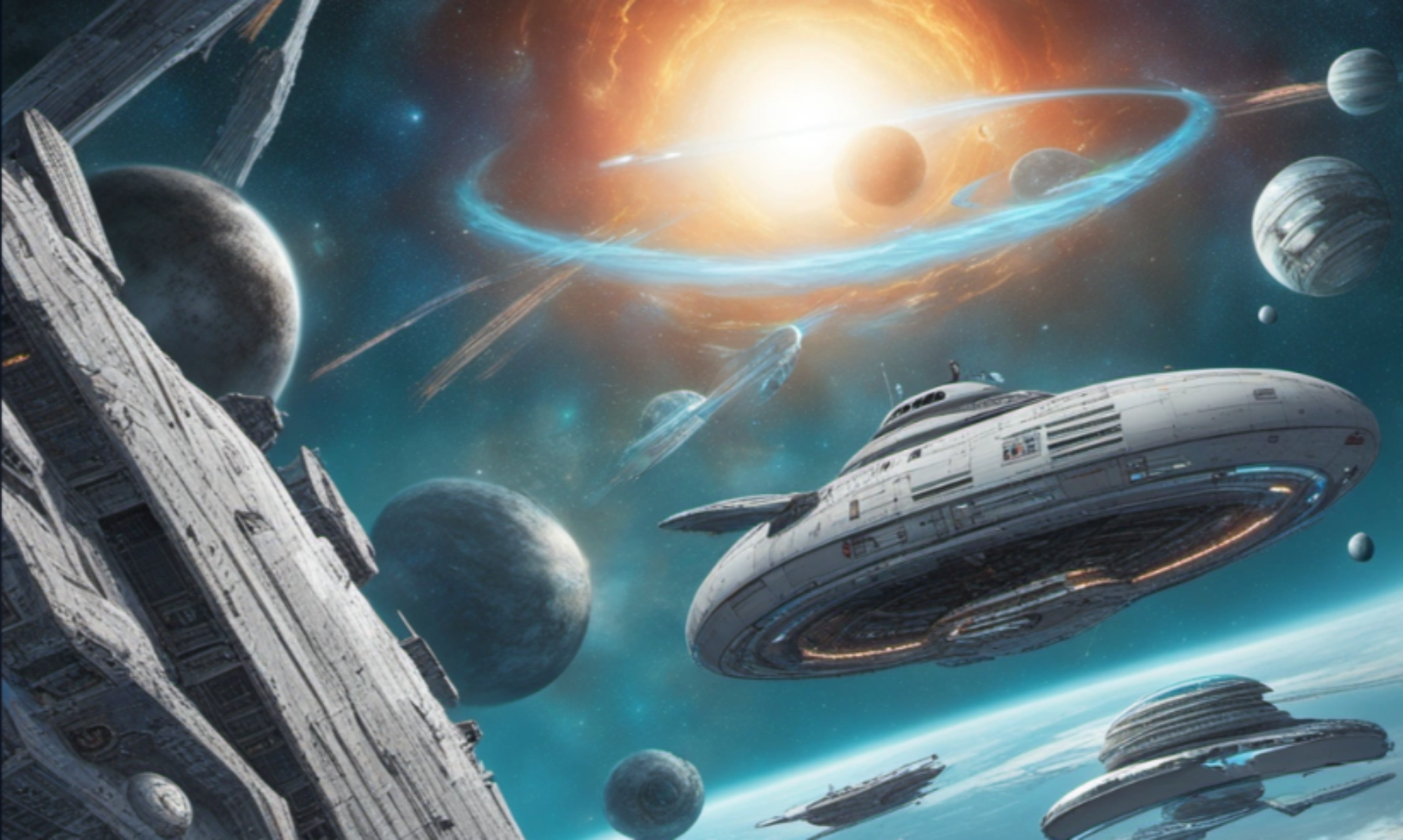It was Frank Drake (1930-2022) who brought Tau Ceti to the attention of science-fiction. In 1960, the National Radio Astronomy Observatory in Greenbank, West Virginia, granted him access to the Tatel radio telescope. What started out as Project Ozma later became SETI, the search for extraterrestrial intelligence.
Drake’s first major contribution to SETI was to point the 26m Tatel dish at nearby sun-like stars Tau Ceti and Epsilon Eridani. The idea was that advanced civilisations like ours would emit radio signals that we could detect. This was a seminal moment in the burgeoning SETI movement and Drake was one of its founding fathers.
Tau Ceti is located in the constellation Cetus (a sea monster in Greek myth). It is a G-class sun-like star, 80% the size of Sol and twice its age at 9 billion years old. That makes it about two-thirds the age of the universe (~14 billion). Tau Ceti is one of the closest main sequence G-type stars. The other being Rigel Kentaurus, also known as Alpha Centauri A. Both stars are prime targets for future colonisation missions. If flying through asteroid fields excites you, then there’s plenty of debris in the Tau Ceti system. In fact, there may be ten times more asteroidal and cometary material than in our own system.
In this respect it is similar to Epsilon Eridani, and one might speculate why both these systems are so cluttered. Perhaps there are no Jupiter-size gas giants to sweep the orbital plane clear. Or it could be due to a previous close encounter with another star disrupting its system. A companion star has also been speculated, and this could also have gravitational effects on any planetary bodies.
Debris disk
In 2004, The James Clark Maxwell Telescope, operated by the East Asian Observatory on Maunakea, discovered this debris disk. It starts at 10AU (1AU=distance b/n Earth & Sun) and extends out to 50AU. For comparison, our asteroid belt lies between the orbits of Mars and Jupiter, at 2.3-3.2AU. So this disk is more like our Kuiper Belt, which begins at the orbit of Neptune (30AU), extending out past the orbit of Pluto (+50AU).
The Kuiper Belt is the source of many of our comets. If Tau Ceti’s belt dynamics are similar, then collisions must be frequent. With ten times more debris orbiting Tau Ceti, scientists argue against the possibility of habitable worlds in this system. Also going against the prospect of life is the low metallicity of the parent star, likely due to its age. Star formation occurs in gaseous nebulae composed of dead stars. When a star dies, fusion in its core produces heavier elements, and some of these may be precursors to life. Tau Ceti formed when the universe was younger and heavier elements were less abundant.
Although we might not find aliens, Tau Ceti will remain a fascinating object to study due to its similarity to our sun. It’s closeness allowed the James Clark Maxwell telescope to image the debris disk (in the infrared spectrum), making it the first telescope to directly image such a phenomenon.
With an apparent magnitude of 3.50, Tau Ceti can be seen with the naked eye. This might be tricky in the city, but with the help of a star-map app like Star Tracker, you should be able to find it, especially if you use binoculars.
The W M Keck Observatory in Hawaii, the HARPS telescope in Chile (High Accuracy Radial velocity Planet Searcher), and the Anglo-Australian Telescope operated by the Australian National University have all been conducting important research on Tau Ceti.

Exoplanet hunters have detected up to eight planets in the system (not all confirmed), two in the star’s habitable zone. ‘Tau Ceti e’ is almost 4 times the mass of Earth. Overcoming surface gravity on this planet would be a huge challenge for any explorers. Indigenous creatures would need strong backs. Or would they be flat land-crawling animals, with their bodyweight spread out to disperse the gravitational force?
Popular culture
Tau Ceti has appeared in diverse science-fiction settings. It has featured several times in Star Trek, including the Original Series, The Wrath of Khan and The Next Generation. Gen X gamers may remember the adventure strategy game, ‘Tau Ceti’. First published on the Spectrum in 1985 and Commodore 64 in 1986, this game makes early use of first-person perspective. The theme: a colonisation mission has fallen silent. You must return to Tau Ceti III and cut off power to the rogue security system.

System Shock 2 (1999), is set around Tau Ceti (although the developers would not have known about its planets then), with the crew bringing back samples to their ship the Von Braun.
In literary science-fiction, Ursula Le Guin’s The Dispossessed recounts internecine warfare between Tau Ceti’s two colonised planets. Le Guin wrote The Dispossessed in response to the Vietnam war protests. But it serves as a useful metaphor for colonisation, with parallels to the US civil war experience.
And last but not least, Tau Ceti is home to the planet Falernia, one of the premier wine producing regions in my Tales from the Orion Arm.
